I long to be instrumental in God’s hands in bringing those who are sitting in darkness, ignorance, and superstition, into the beautiful light of the knowledge of the gospel. I have ever esteemed the title of ‘Missionary’ the highest of all earthly titles, and desire to labour on in this glorious work until I die.
Mary Briscoe Baldwin (Pitman, 1880, p. 18)
A quick overview of Greece at the time: Once they became an independent state in 1830, the government provided elementary education for all young children at a low fee but only if their parents could pay. Greece always encouraged learning and respected domestic life, legally requiring that all children aged 7-12 attend school. Before they gained their independence, the Greeks had been subjected to all sorts of injustices, so when the missionaries arrived, they provided not only spiritual guidance but also physical guidance.
Dr. and Mrs. Hill were the first people to identify the need to teach girls how to become seamstresses. In 1832, Dr. Hill met a paraplegic girl named Catarina who talked about how much she would benefit from learning how to knit, which would allow her to earn bread to feed her family. Catarina’s story inspired Dr. Hill to establish an industrial school that taught Greek girls from poor families how to read, knit, and sew. In turn, they would be able to provide food for their families by earning a living.
Mary traveled to Athens, Greece in 1835 with Miss Frederica Mulligan, one of Mrs. Hill’s sisters. She earned a salary of $250 a year, which she supplemented with her inheritance. Everyone loved Mary, and the community valued the way she was teaching their young girls and women how to be independent. Mary said that the industrial school didn’t just teach – they were nurseries of piety. In February 1835, Mary was teaching about 50 girls, aged 7-15. She said,
The Greeks of today truly seek knowledge, and are not slow to acquire it, I assure you.
Mary Briscoe Baldwin (Pitman, 1880, p. 61)
Did you know?
Sewing schools were also called Lancasterian Schools or Schools of Industry.
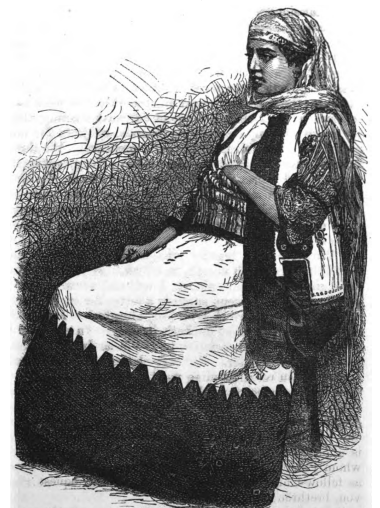
A typical day at the Athens Mission school
9 a.m.
9-10 a.m.
10 a.m. – 1 p.m.
1 p.m.
1-1:30 p.m.
1:30-3 p.m.
Prayer and gospel reading
Recite scripture
Sewing and knitting work
Say grace with their teacher
Lunch break in the courtyard
Attend reading, writing, or arithmetic lessons
Never, never – no, not for a moment- have I regretted having dedicated myself, soul, and body to the service of my years of my missionary life here. I have only once visited my native land and kindred.
Mary Briscoe Baldwin (Pitman, 1880, p. 159-160)
More Family Loss
Shortly after she returned to Athens in the fall of 1847, her youngest sister, Ann Hay, lost her husband, leaving her a widow left to raise her infant son, John Hay. In this same window of time, Mary lost her eldest sister, Eleanor, too, who left behind three orphaned children as her husband had recently died, too. In the midst of grieving, Mary deliberated on what her future was going to look like as Eleanor had left her to care for her three young orphaned children. Mary consulted with many close friends and confidants on what she should do, including Ann Hite and Bishop Meade:
It then became a serious question of duty with me whether or not I should resign my situation in Greece, to return home to take charge of these orphan children. I consulted Bishop Meade, my spiritual guardian, and other friends, and it was arranged that, for a time at least, I should remain in the work of the mission in Greece, to which my friends knew I was strongly attached.
Mary Briscoe Baldwin (Pitman, 1880, p. 116)
Given Ann’s great influence in Mary’s life, she played a significant role in Mary’s decision to stay in Athens after Eleanor died. Ann Hite and Ann Hay both volunteered to care for Eleanor’s children for a couple of years, allowing Mary to remain in Athens to continue her mission work. During this time, Mary was trying to figure out a way to balance her missionary life in Athens with her family back home. Her aunt, Portia Baldwin, actually suggested to Mary that Ann Hay, John Hay, and Edmonia (Eleanor’s youngest orphaned daughter, who was born in 1848) move to Greece rather than Mary move back home to Virginia.
This led me to consider prayerfully whether I might not create a sphere of labour here for my sister, in which we might be associated, and then I should be able to accomplish the double object of retaining my position here as a missionary, and fulfilling my duty to those of my ‘own household.’
Mary Briscoe Baldwin (Pitman, 1880, p. 118)
The seed that her aunt planted within her was another pivotal moment in Mary’s life.
Breaking out on her own
Mary didn’t take her Aunt Portia’s suggestion lightly – the decision on how to balance her mission work with her family duties – and she voiced a bit of anxiety to her sister, Ann Hay, and stressed the importance of thinking thoroughly through their options before acting prematurely. She wanted to ensure that the two of them had the means to live together as a family while sustaining their financial independence. In a letter she wrote to Ann, she says,
I feel now, my fear sister, that I ought to think seriously of preparing to share with you the cares and toils of your life, seeing your willingness to aid me in providing for our dear sister’s orphaned little ones. But, at the same time, it is important that we should secure some position, which would ensure us the means of living without encroaching on the principal of our funds, before I resign my position here; otherwise my resignation would provide to us and to the children a loss instead of a gain. So, my dear sister, we must be wise and cautious, and count well the cost of what we propose to do before we take any important step.
Mary Briscoe Baldwin (Pitman, 1880, p. 119)
By this time, Mary was a seasoned missionary in Athens and knew the area well – from the people, to the culture, to the needs, to the deficiencies. Given her knowledge, she realized that there was an opportunity for her and her sister, Ann, to start a boarding school for girls in higher classes, not just lower and middle classes, with a very similar model to the original school started by the Hills. Mary took some of her inheritance to fund this boarding school, which she was hoping would become a model school that blended religious instruction with domestic training.
In November 1852, Ann Hay, John Hay, and Edmonia joined Mary in Athens, and the following year, in January 1853, they all moved into a rental home all on their own, allowing them to live together under the same roof. While Mary still coordinated with the Hills, she and her sister, along with her niece and nephew, lived independently. In opening her own school and breaking out on her own, she was able to strike that balance of providing for and supporting her family while maintaining her dedication to mission work.
The two sisters continued to run their new boarding school in Athens for many years, until the Cretan Revolt started in 1866, presenting Mary with another opportunity for outreach and mission work.
Cretan Revolt, 1866-1869
Let’s set the stage for Crete in 1866. The small island had a population of 200,000 people, of which about 50,000-60,000 were Turkish and the remainder Grecian. While it was technically a Grecian island, Turkey controlled it. Greek Christians were forced to convert to the Mussulmen faith (modern-day Islam) as a means of surviving the brutal Turkish rule. Cretans, along with the support of the Grecians, rose up against unbearable oppression of the Turkish government, ultimately gaining partial freedom from Turkey, which involved creating their own constitution.
While they were able to attain partial freedom, the Cretan Revolt created an influx of Cretan refugees to Greece, which is where Mary enters the picture to help take care of these refugees for the next few years. Right before the revolt, Mary was planning to return home, but with the war, she knew her skills were needed more in Athens than in Virginia.
So wide a field for missionary labour is now open here among the Cretan refugees, that I could not justify myself were I voluntarily to turn away from it, so I shall remain in Athens. In various quarters of the city there are now numbers of Cretans begging to be taught to read, and gladly listening to instruction from the Scriptures.
Mary Briscoe Baldwin on February 14, 1867 (Pitman, 1880, p. 177)
During this time, Mary wrote to friends and family in American and in England, asking for help to support the refugees who were now under her care. Mary fed and educated Cretan refugees as well as helped young women provide for themselves. In the spring of 1867, Mary received funds from America to help refugees and used these funds to employ nearly 300 girls and young women to knit and sew. By September of that same year, these girls and young women had made nearly 3,500 garments, sacks, and socks.
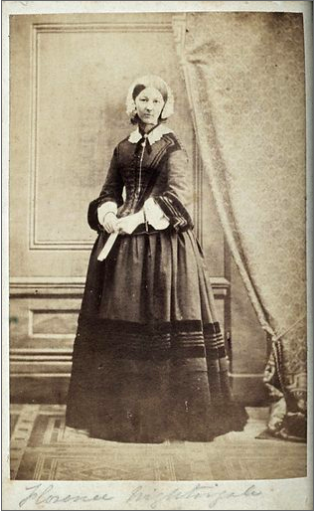
(Florence Nightingale, 1850)
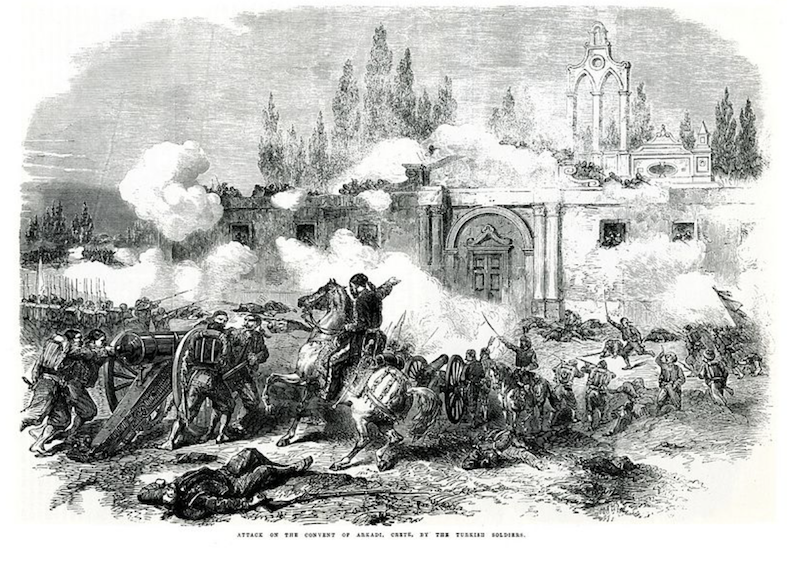
I have long felt that simply to do and to suffer God’s will, should be the Christians ruling motive of action through life. I am fully convinced that when every other motive is subordinate to this, peace and quietness of mind is secured amidst the ever-varying scenes of life.
Mary Briscoe Baldwin (Pitman, 1880, p. 159)
In 1867, Ann Hay moved to Joppa, Syria (modern-day Tel Aviv, Israel) to join her son, John Hay, who was now the U.S. vice-consul. Together, Ann and John they started a school for poor boys. Once the Cretans began to return home in 1869, leaving Mary with a strong desire to join her sister, Ann, and nephew, John, in Joppa. She had a surplus of 300 dollars from the Cretan school funds, so she requested a transfer from the Missionary Committee in New York. They ultimately approved her request, and in June 1869, Mary headed to Joppa with her 300-dollar surplus to join her family and help run their school.
What is a U.S. consul?
A U.S. consul is an official representative of the United States government and protects the interests of Americans in a foreign nation. In John Hay’s role, he protected the Americans living and traveling in Joppa, Syria. They also help build and strengthen relationships between the United States and other countries.
Did you know?
Mary met Florence Nightingale during the Cretan Revolt. Florence was in Greece helping nurse the sick and wounded and learned about Mary during a visit to Athens.
These two benevolent women were actually two peas in a pod! They both grew up in very affluent families, not wanting for much but also not feeling fulfilled. Florence, too, went through a spiritual awakening as a young woman, trying to find her path in life, ultimately deciding that her mission was to do God’s work. While Mary decided to teach, Florence decided to nurse. Mary received pushback for wanting to travel abroad and do mission work; Florence received pushback for wanting to become a nurse, which, in her time, wasn’t a proper profession for a woman of her social and financial status.
In the end, their shared love of and devotion to humanitarian work bonded them in friendship long after the revolt had ended.
Letters written by Florence Nightingale to Mary Briscoe Baldwin
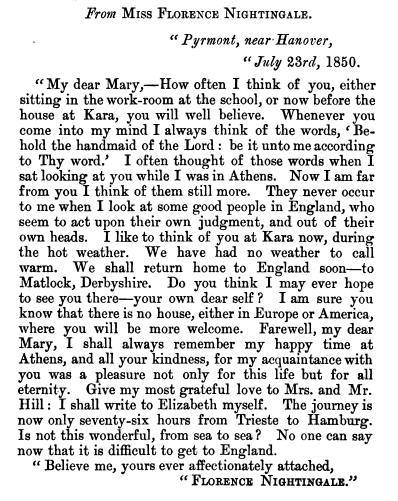
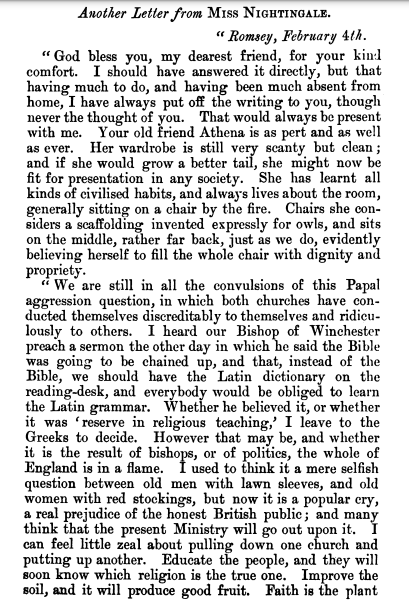
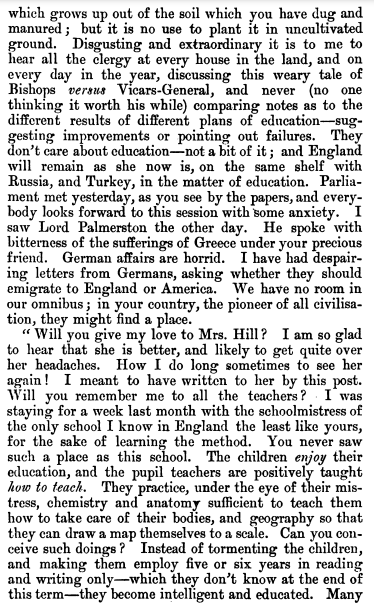
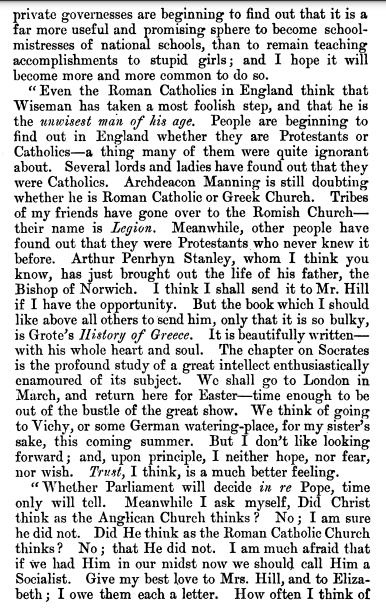
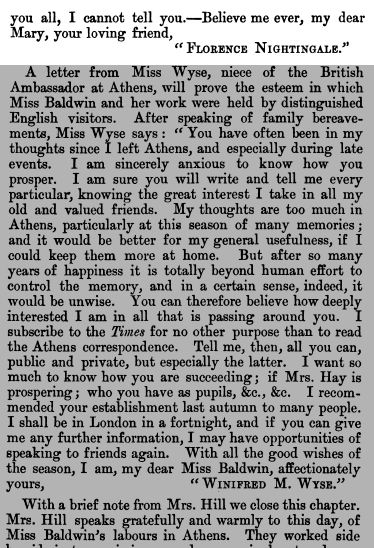
Go to previous section, Early Life
Go to next section, Holiday in Italy
(1867). Turkist army attacking Arkadi monastery. Wikimedia Commons. Retrieved April 23, 2022, from https://commons.m.wikimedia.org/wiki/File:Arkadi_assaut.jpg
Florence Nightingale. (1850). Encyclopædia Britannica. Retrieved April 23, 2022, from https://www.britannica.com/biography/Florence-Nightingale#/media/1/415020/146161
Pitman, E. R. (1880). Mission Life in Greece and Palestine: Memorials of Mary Briscoe Baldwin, Missionary to Athens and Joppa. Cassell, Petter, Galpin & Co.